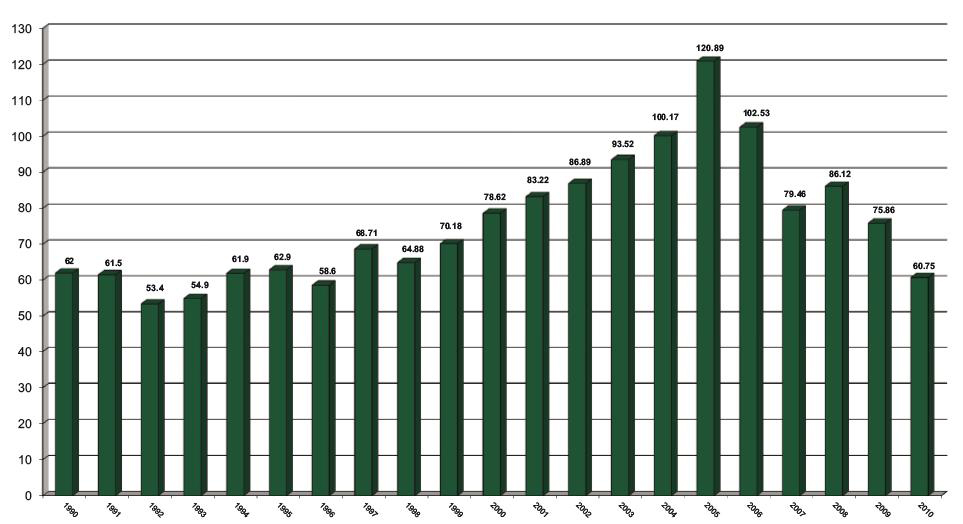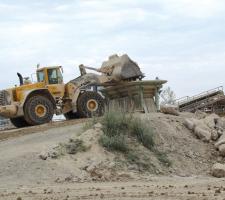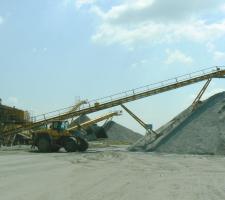
Demand for aggregates in Hungary has dropped dramatically in recent years. Julie-Anne Ryan reports
The aggregates market in the small, land-locked central European republic of Hungary has dropped markedly in the last few years along with so many others worldwide. Figures show that it's back to where it was 20 years ago, despite being double that size as recently as 2005 - a surge in construction projects around that time clearly couldn't be sustained.
In 2002, the production of construction materials ranked third among Hungary's industries - mining itself was top. Cement and coal were the dominant components of the industrial minerals and mineral fuels produced, but while crude raw material exports rose by 16.2% in 2001, Hungary relied heavily on imported mineral raw materials. The GDP grew by 5.5%, but mining and processing output declined by 10%.
At this time, construction aggregates and cement continued to be important to the country's economy, particularly as Hungary's infrastructure needed modernising and highway construction plans for 2008 were vital to industry growth.
Geology
The country is renowned for the diversity of its geology. Most of the surface is lowland, and a tectonic plate margin (the Zágráb-Hernád vonal) divides the country into two distinct geological parts. Rocks to the north of it are of African origin and to the south, Eurasian.
Emphasis on Hungary's varied range of industrial minerals has increased, though since the closure of most of its coalmines; the last hard-coal mine, an open-pit operation in the south of the country, was shut in 2003. As it stands now, the aggregates and mineral raw material property that can be exploited economically is just over 8billion tonnes, according to the Hungarian Mining Association
Secretary General of the Hungarian Mining Association, Dr Ákos Zoltay, explained that infrastructural development has been an outstanding factor in the economical development of Hungary following the change of regime.
"The production and use of aggregates are essential elements of the highway construction programme," he said. "As a consequence of this, considerable increase can be seen in the sector. Several highway constructions were effected during the past 20 years, which makes it possible to link into the European network. From this point of view the most considerable were the M1 highway towards Vienna and Bratislava, the M7 toward Austria and Slovenia, the M3 toward the east - which enabled business relationships to be built - while the M5 and further on the M6 highways improved contact and availability toward the southern regions."
Privatisation
Following the change of regime and the privatisation of the industry, the mining of stone, gravel, sand and clay played an important role, said Zoltay.
"The investors recognised very clearly that the products of this industry were essential to effect the state infrastructural developments," he explained. "In other words, it was promising for a sure market and for effective capital recovery.
"Then the Hungarian government made a very wise decision, which meant the Bukkosd Quarry produces limestone aggregates in order to avoid monopoly - that it did not allow just one foreign capital group to obtain the sector. Practically, Hungary was divided among the capital investors. German, English, French and Mexican investors got opportunities in the privatisation.
"Still today
"In Hungary the considerable highway construction actions have almost come to an end," he said. "The new challenges are the reconstruction of the present highways and those plans that favour the railways reconstructions. All these challenges and plans emphasise the supply of high quality basic material supply, besides the use of mass basic materials." Zoltay pointed out that the country must balance on one hand the safety issues around the wear and tear of main highways - and on the other those around the burden-bearing capacity of railway lines.
"We are still extremely sure that the exploitation of mineral raw materials plays a determinant role in the development of the national economy in the future, too," he said.
The Hungarian Mining Association believes the establishment of the mineral property management strategy at national level to be extremely important. Zoltay said that this would secure the possibility of access to mineral raw materials, and enable the industry to work out a consensus that would secure economic growth beside environmental interests
"All this is based on mineral raw materials production," he stressed. "We are convinced that in the whole world, in Europe, in Hungary, economic growth is not possible without exploitation of mineral raw materials, aggregates and energy suppliers that create real value."















